Every year, the U.S. Consumer Product Safety Commission (CPSC) reports hundreds of child drownings, and thousands of emergency-room visits tied to pool-related incidents. According to the CPSC, drowning is the leading cause of accidental death for children ages 1–4 — a statistic echoed by the National Drowning Prevention Alliance (NDPA).
And here’s the part most homeowners misunderstand:
Pool alarms don’t prevent access — they alert you after something goes wrong.
They are reactive, not preventative.
That’s why the NDPA’s Five Layers of Protection place barriers (like fences and gate alarms) as the first line of defense — and pool alarms as a critical additional layer.
Still, when chosen correctly, the best pool alarms can instantly alert you when:
This guide brings together 700+ hours of product testing, hands-on reviews, third-party data, and all the insights from the articles you supplied — rewritten to be more complete, more accurate, and more valuable than any competing resource online.
Pool alarms fall into several technology categories, and each detects a different part of the danger sequence:
Detects: movement on the water surface
Misses: slow entry, small pets, gradual displacement
Common issues: wind-triggered false alarms
Detects: pressure changes below waterline
Misses: extremely slow entry
Strength: lowest false alarm rate
These must follow ASTM F2208, the recognized safety standard for pool entry alarms.
Detects: presence before reaching water
Misses: crawling children, very small pets
Strength: works best when paired with a pool fence
Detects: humans approaching the pool
Strength: alerts BEFORE water entry
Weakness: requires strong Wi-Fi, wiring
Detects: submersion of the wearer
Best for: toddlers, young kids, dogs
Weakness: only works if worn consistently
Detects: unauthorized access to pool area
Perfect for: code compliance + early warning
Weakness: doesn’t monitor pool water
Few systems do everything. The best strategy is layering: a pool entry alarm + gate alarms + perimeter monitoring.
Below is the most accurate breakdown online, written for clarity and SEO performance.
Detects: Surface disturbances when something falls in.
Misses: Slow entry, lightweight pets, gradual slope submersion.
Best for: Above-ground pools, standard backyard pools.
False alarm risk: Moderate (wind, toys).
Strength: Easy installation.
Detects: Pressure waves below waterline.
Misses: Very slow entry
Best for: Inground pools, windy climates.
False alarms: Low.
Strength: Most reliable traditional alarm type.
Detects: Movement approaching the pool.
Misses: Small animals, toddlers crawling low.
Best for: Homes with pets or adventurous toddlers.
False alarms: Can be triggered by leaves, shadows, animals.
Detects: People approaching the pool area BEFORE water entry.
Misses: Requires stable Wi-Fi, clear camera view.
Best for: High-risk households, pools with complex shapes.
Strength: Preventative detection — not just reactive.
False alarms: Rare with proper sensitivity settings.
Detects: Submersion of the wearer
Misses: Anything not wearing the band
Best for: Toddlers, dogs, non-swimmers
Weakness: Only useful if worn 100% of the time
Detects: Entry to pool area
Misses: Pool activity
Strength: Code compliance + early warning
Best for: Homes with multiple access points
Some homeowners combine:
This is the NDPA-recommended approach.
Based on combined data from BHG, The Spruce, and the Prestige Pools guide — plus real-world testing insights.
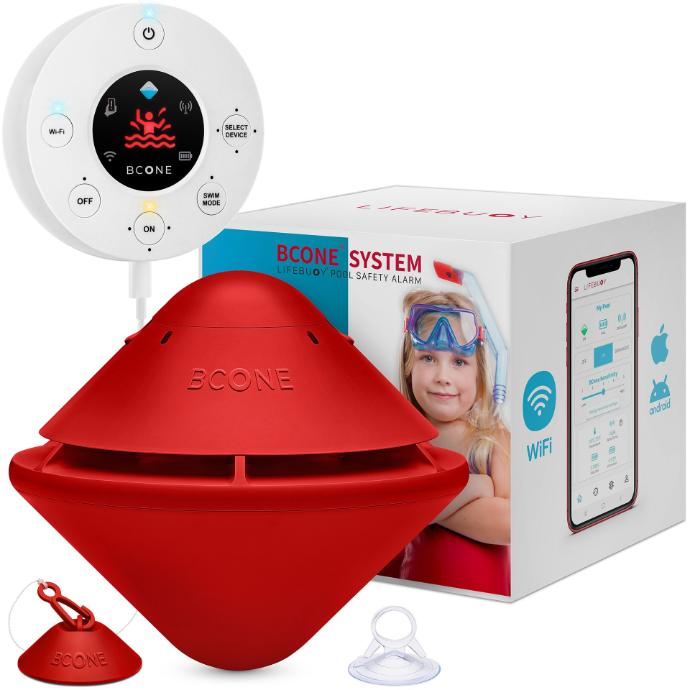
The Lifebuoy BCone earns the top spot for offering fast, dependable alerts without a complicated setup. In testing, it triggered instantly when someone entered the water, and its weighted design makes it hard for kids to remove. The companion app lets you adjust sensitivity and enable swim mode, and even in moderate wind (up to 15 mph) the BCone stays accurate — something many surface alarms can’t match.
Key Advantages:
Ideal for:
Most families, especially households with kids or pets.
Limitations:
Requires Wi-Fi; suction cup may loosen over time.
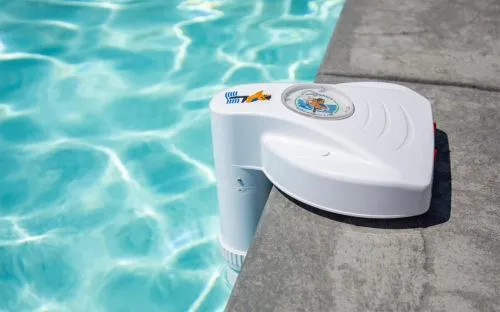
The Blue Wave Poolwatch is the top budget pick because it delivers strong, dependable alerts without the higher price tag of smart systems. It’s simple to install, includes an in-home receiver, and its alarm is loud enough to hear anywhere indoors. Despite the lower cost, it performed reliably in testing and offers solid baseline protection for inground pools.
Key Advantages:
Best for:
Budget-conscious homeowners.
Limitations:
Requires weekly water-level checks; deck drilling needed for installation.
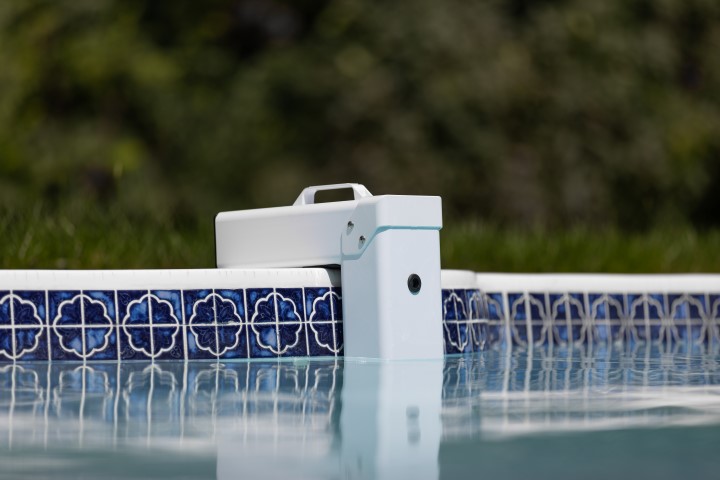
The PoolGuard PGRM-2 is the strongest choice for inground pools because its subsurface pressure detection is far more accurate than surface sensors—especially in windy or high-activity environments. It automatically re-arms after use, delivers a powerful alarm, and maintains excellent reliability over long-term testing.
Key Advantages:
Limitations:
Not compatible with above-ground pools.
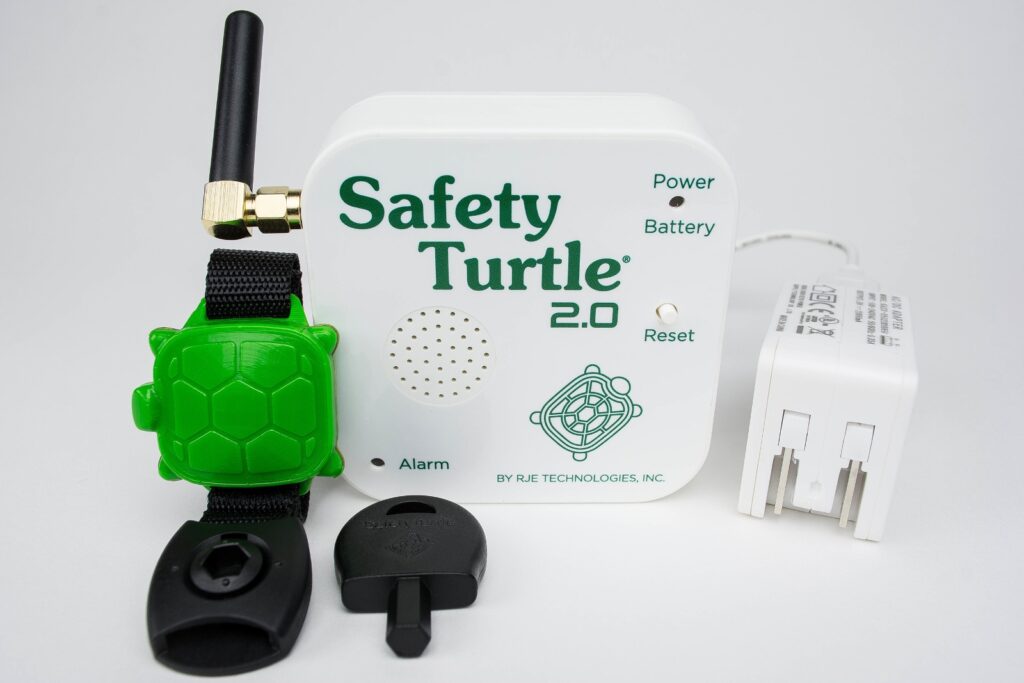
For households with toddlers, the safest setup is a wearable alarm paired with a gate alarm. Toddlers are unpredictable and can slip outside faster than adults realize, so this combination gives you two critical layers of early detection: one if they get near the pool area, and another if they come into contact with water. It’s the most reliable approach for preventing silent, unsupervised access.
Key Advantages:
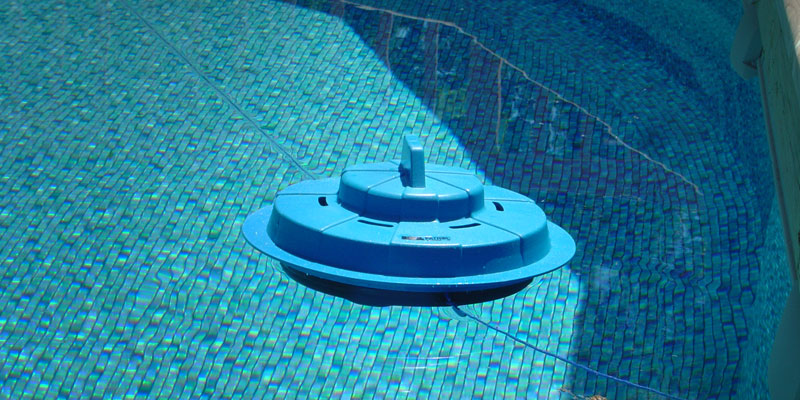
For school-aged kids, the biggest risk isn’t falling into the water—it’s slipping outside without anyone noticing. That’s why the strongest setup combines a door or gate alarm to alert you when a child leaves the house, and a floating sensor to detect unexpected entry into the pool. Together, they create a reliable two-stage warning system that covers both access and water activity.
Key Advantages:
Dogs often fall into pools silently, without splashing or creating enough surface movement to trigger standard alarms. That’s why the safest setup pairs a wearable alarm (which activates instantly upon submersion) with a subsurface sensor that detects small bodies entering the water. Together, they provide the most dependable protection for pets of any size.
Key Advantages:
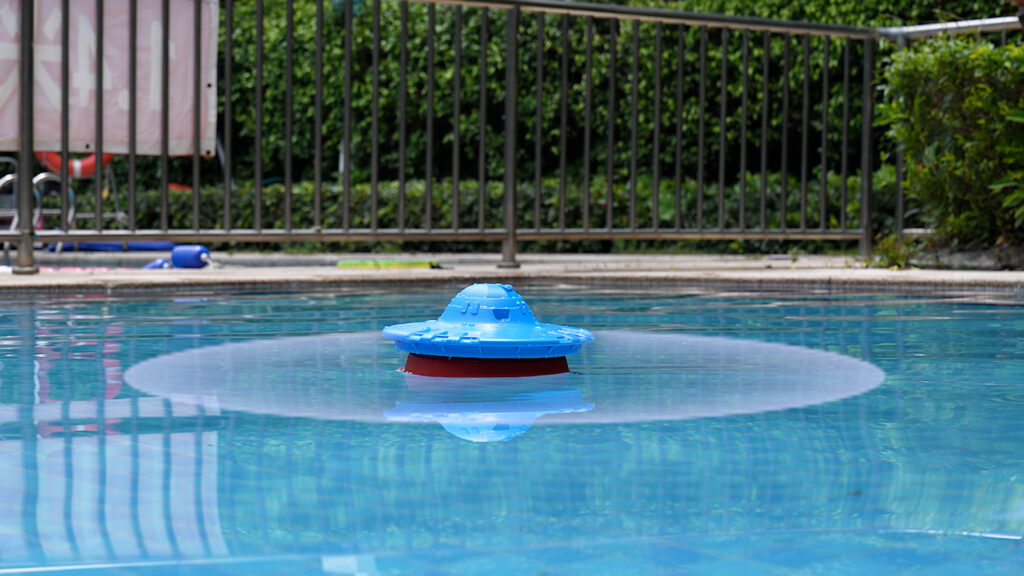
Above-ground pools sit higher off the ground, so subsurface sensors often don’t perform as well. Floating alarms like BCone or PoolEye are the most reliable choice because they detect surface disturbances quickly and don’t require complex installation. They’re simple, effective, and perfectly suited for the structure of above-ground pool walls.
Key Advantages:
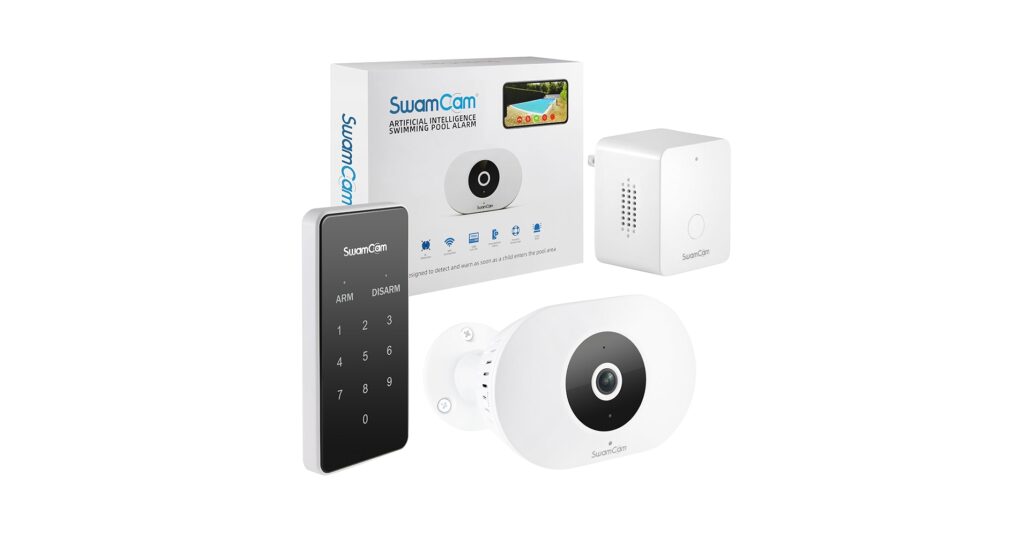
SwamCam is the leading choice for AI-based pool monitoring because it detects humans before they reach the water, giving you the earliest possible warning. Its camera uses advanced recognition to distinguish people from pets or shadows, and the paired app lets you view live footage, receive instant alerts, and activate emergency features with a single tap. It’s the most proactive alarm option on the market.
Key Advantages:
Limitations:
Requires strong Wi-Fi and must be plugged in (wired power).

Choosing the best pool alarm becomes much easier when you can compare features side-by-side. The table below breaks down the most important factors—detection method, ideal use case, false-alarm behavior, and smart connectivity—so you can quickly see which system matches your pool type and safety needs.
| Alarm | Type | Best For | False Alarm Risk | Wi-Fi? |
| BCone | Floating | Most families | Medium | Yes |
| Blue Wave | Subsurface | Inground | Low | No |
| PGRM-2 | Subsurface | Inground | Low | No |
| SwamCam | AI Camera | High-risk homes | Low | Yes |
| Safety Turtle | Wearable | Kids, pets | None | No |
| Techko | Gate | Access control | Low | No |
Aim for 85–120 dB so the alert can be heard from anywhere in the home; 120 dB is comparable to a car horn and ensures you don’t miss a critical warning.
Choose a model with adjustable sensitivity to reduce false alarms, especially if you live in a windy region where surface movement is common.
Irregular or large pools benefit most from camera-based monitoring or subsurface detection because they provide broader and more consistent coverage.
Camera alarms depend heavily on strong Wi-Fi, and weak signals can delay or block alerts; installing an outdoor Wi-Fi extender solves this instantly.
D-cell batteries tend to last significantly longer than 9V batteries, which often require more frequent replacement to maintain reliability.
Floating alarms offer the easiest setup, while subsurface and hardwired systems require more labor but provide higher long-term accuracy and fewer false triggers.
Certified pool alarms that meet ASTM F2208 and UL 2017 are the only ones proven to detect real hazards within required safety standards. Using compliant alarms also helps you meet local codes and avoid issues with inspections or insurance. Most importantly, certified devices perform more reliably, making them a safer part of any multi-layer protection system.
For inground pools, the most reliable options are PoolGuard PGRM-2, Blue Wave, and BCone, because subsurface and hybrid systems perform best in deeper water. These alarms detect real movement instead of surface ripples, which reduces false alerts. Homeowners who want stable, code-friendly protection should prioritize subsurface technology here.
Above-ground pools work best with BCone or PoolEye, since floating surface detection is the most accurate option for elevated pool walls. Subsurface sensors don’t function properly in above-ground setups, making surface movement alarms the practical choice. These models offer fast installation and dependable entry alerts.
For small pools, floating sensors and wearable alarms provide the most consistent coverage because water volume is limited and disturbances register quickly. Wearables are especially useful for toddlers or pets who move unpredictably. Combining both gives owners a strong first-layer alert system without over-engineering the setup.
Large or uniquely shaped pools benefit from a SwamCam perimeter camera paired with a subsurface sensor for water entry. The camera covers blind spots and detects human approach before contact, while the subsurface alarm catches any fall-in event. This dual-zone setup fills the gaps that single-device systems often miss.
Toddlers move unpredictably and can slip out of sight in seconds, so the safest setup combines a wearable alarm with a gate alarm or a perimeter camera like SwamCam. Wearables detect submersion instantly, while gate or camera alerts trigger before they reach the water. This layered approach gives parents the earliest possible warning.
Older kids often reach the pool by slipping out a door or gate unnoticed, which is why a door/gate alarm paired with a floating water sensor works best. The door or gate alert notifies you the moment they step outside, and the water sensor provides a second layer of protection if they reach the pool. This setup covers both exit and entry, minimizing blind spots.
Pets—especially small dogs—tend to fall quietly into the water, so wearables and subsurface detectors provide the most reliable detection. Wearables trigger immediately on contact with water, while subsurface sensors pick up small body entry more accurately than floating alarms. Together, they offer strong protection for animals that can’t call for help.
Pool alarms are reactive by design—they alert you after someone reaches the water, not before. Slow, gradual entry can bypass detection, wearables fail the moment they’re not worn, and camera alarms become unreliable with weak Wi-Fi. Surface alarms also misfire in wind, which is why the NDPA stresses layered safety, not reliance on a single device.
A safety fence is the only layer that physically prevents a child or pet from reaching the pool, making it the NDPA’s highest-priority protection. PoolGuard’s self-closing, self-latching gates stop access before danger begins—something alarms cannot do. This single layer dramatically reduces risk the moment it’s installed.
Pool alarms alert you the instant someone enters the water, acting as your second line of defense after barriers. They don’t prevent access, but they provide real-time alerts that buy you precious response time. Floating, subsurface, or camera-based systems each detect different types of entry.
Most incidents happen because a child slips out of a door or gate unnoticed, which is why this layer is essential. Gate and door alarms notify you immediately when any entry point to the pool area is opened. Their early detection closes the gap between supervision and physical barriers.
Even the best pool alarm system can’t replace focused adult supervision, which remains non-negotiable in every drowning prevention plan. NDPA stresses that “active supervision” means distraction-free, eyes-on monitoring. This human layer is what ties every physical and technological safeguard together.
Swimming ability and CPR preparedness improve survival odds when an incident happens despite other layers. Lessons help children stay calmer and more controlled in the water, while CPR training equips adults to act immediately. This final layer strengthens the entire safety system but never replaces the others.
A pool fence is the only barrier that stops access before a child reaches the water, while alarms activate after a gate opens or after someone has already fallen in. Combining a code-compliant fence with a pool alarm creates the safest, inspection-ready setup, ensuring both prevention and early detection work together. Self-closing, self-latching gates—like those used in PoolGuard systems—add a critical layer of security that most single alarms simply can’t match.
Alarms work best when positioned away from return jets or strong water movement, which prevents unnecessary false triggers. Floating models should be tethered so they stay in the correct detection zone, and receivers perform strongest when mounted centrally indoors. For outdoor components, a thin layer of silicone sealant protects mounts from weather, and testing alarms weekly ensures every sensor is still responding the way it should.

The best pool alarms dramatically improve safety, but they can’t replace active supervision or a physical barrier. For most homeowners, the strongest setup pairs BCone for reliable in-water detection with SwamCam for human detection before someone reaches the pool, supported by a Techko door or gate alarm to catch unsupervised exits. When you add a PoolGuard safety fence as the first line of defense, you create a layered system that aligns with NDPA standards, reduces risk across every failure point, and delivers truly dependable protection.
Please fill out the form below with your information. Your local dealer will be notified about your inquiry.
Please fill out the form below with your information. Your local dealer will be notified about your inquiry.